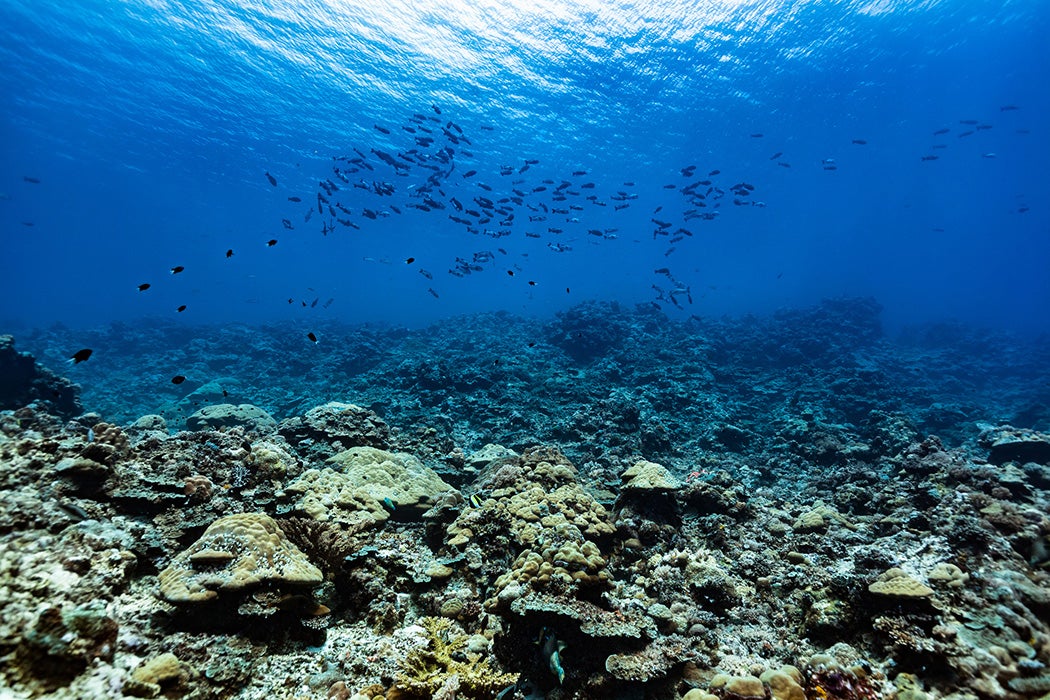Just beyond the colorful coral reefs and tropical waves of the island nation of Palau, a far rarer sort of reef juts up from the crushing blackness of the deep Pacific Ocean.
It’s called the Ngaraard Pinnacle. And unlike neighboring coral reefs, the environment of the narrow, shear ridge, which is surrounded by the deep on all sides and peaks 300 feet below the surface of the ocean, has long been a mystery. Until now, that is, thanks to a team of scientists led by Patrick Colin, who recently completed the first full look at what lives on Ngaraard Pinnacle, and “how this rare habitat—the first described in the Pacific—is able to support life.”
Although coral reefs tend to hog the limelight, not all reefs are made of coral: any hard structure in the ocean, such as oysters or shale, can similarly break up the flow of the surrounding water. These surfaces tend to make prime real estate for legions of sea creatures, from the Nemos and Dorys of the Great Barrier Reef to crabs and rockfish off the coast of California. Deeper reefs tend to receive nutrients and waterflows from shallower habitats upslope; Ngaraard Pinnacle is unique in the Pacific Ocean because it is what Colin and his team dub a “deep water island.” It is isolated from other environments, but it also exists at a depth at which most of the ocean is either bottomless or a gradually sloped decline.
Local fishermen have long known that something was down there, but until the last few years scientists had hardly mapped the full contours of the dimly lit, lone skyscraper of a reef, let alone send down cameras or collect data on species there. Some researchers hoped to find reef-building corals living at the edge of their comfort zones, as some do at deeper reef sites in Hawaii. Instead, they discovered “sea fans and soft corals, a modest number of echinoderm [seastar and urchin] species, and abundant and diverse bony fish fauna.”
Weekly Newsletter
Unlike tropical coral reefs, which are infamously sensitive to water temperature, the creatures at Ngaraard Pinnacle can weather changes in water temperature as extreme as 20 degrees Fahrenheit within the same season—a difference akin to switching from a hot tub to a chilled swimming pool. They also live just at the bottom edge of the surface-churned mixed layer, giving animals that might migrate up or down the pinnacle a bit a shocking blast of colder, swifter, or differently oxygenated seawater.
Not knowing what lies beneath the sea can seem almost antiquated in the modern age of precise Google mapping and renewed space exploration. But these chasms in our knowledge of the ocean are the rule more than the exception. With the vast bulk of the ocean floor still uncharted, even more surprising environments than Ngaraard Pinnacle are sure to be described, given a will to know what’s down there.







